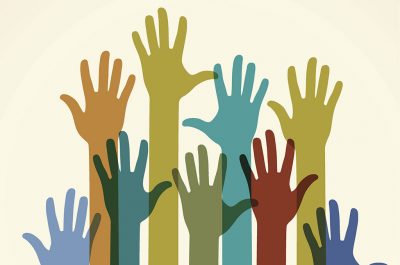As a UConn Dean, I am Privileged. As an African American Woman, I am Struggling.
Hartford Courant (Dean Gladis Kerstaint pens commentary on struggling about being a privileged African American woman)
Joint Statement from the Dodd Center and Human Rights Institute
Thomas J. Dodd Research Center (Glenn Mitoma, Neag School faculty member and director of the Dodd Center, co-writes statement about Black Lives Matter)
A Message to the Neag School Community
Anti-Racism Resources for Students, Educators, and Citizens
Why Do You Ally with #BlackLivesMatter? Intentions Matter
Hartford Courant (Neag School alumnus Jack Kitching pens commentary on being a white man and reflecting on attentions for allying with #BlackLivesMatter)
Taking Principal Training to the Real World
Wallace Blog (Neag School’s University of Connecticut Administrator Preparation Program is covered how it’s reexamining internships to strengthen principal training)
New Britain Schools Vow Inclusion in Wake of George Floyd’s Death
NBC Connecticut – video (Violet Jiménez Sims is interviewed about New Britain Schools’ board of education’s vow of inclusion)
How Will Teacher and Principal Training Look in a COVID-19 World?
Editor’s Note: This article originally appeared in The Edvocate.

I remember driving home from my first week of teaching, crying. Building a classroom community, working with an incompatible co-teacher, and learning a new curriculum weighed down on me. There was also the realization that I was now a teacher. I called my mentor and reflected on my week through gulps and sobs. As she listened, she reminded me of classroom management practices I had seen as a student-teacher.
Bringing me back to my clinical placement allowed me to focus on the best practices I could implement. Those best practices would also shine through when I became a principal. Not only did I learn how to strategize to meet my annual progress goal, but I learned how to negotiate all of the needs of the various stakeholders. I reflect on these two points in my career wondering how we will train our principals and teachers in a virtual world? What will clinical placements look like?
We need to get ahead of this crisis to survive and thrive together. It is time to provide alternate options in education preparation so we can continue to prepare high-quality leaders and teachers within this ‘new normal.’
The traditional model in teacher education expects aspiring leaders and pre-service teachers to engage in internships. These internships, called clinical placements, provide aspiring leaders to learn side by side, in schools with mentor principals and pre-service teachers with the opportunity to student-teach. For example, aspiring principals develop leadership skills such as resolving issues with an upset parent or giving feedback after a classroom observation to a teacher through mentorship.
Pre-service teachers learn to engage with children and deliver instructional strategies monitored by highly effective teachers. Several studies have demonstrated the benefits of clinical placements for educators and leaders, serving as an important part of a leader and educator’s learning trajectory that doesn’t translate through Zoom calls. Further, culturally relevant scholars describe being in schools that are different from the identities and experiences of pre-service leaders and teachers, give them insight and decrease issues of equity. When pre-service educators do not have clinical placements, they lose the ability to learn about the human connection that binds educator and leader to student and teacher. Most importantly, they lose the indisputable joy of being in a school.
We need to prepare for the possibility that clinical placements will look different in the fall and beyond. Clinical placements bring many benefits, but they also bring the reality of teaching and leading to educators who may have only experienced schools through texts and videos. Even in a “new normal,” this is not normal, and the importance of clinical placements shouldn’t be diminished. Education programs should begin the conversation with their partner schools about the hours of service and rules of engagement if schools remain virtual.
We must also move fast to redesign elements of education programs that will train its aspiring leaders and pre-service teachers for the new educational landscape. Many teachers are acclimating to the hard turn of a completely virtual learning experience. Virtual learning requires a host of pedagogical skills which typically is not the focus of education programs. Leaders have to learn how to assess academic growth while teachers have to learn how to bridge the gap and encourage learning.
This generation of pre-service teachers and aspiring leaders need to learn these methods as well. Preparation programs should evaluate how they will accomplish this task by gathering together to develop an example of supplemental material that could look like addendums to syllabi. No longer will teaching online be a mere addition to the typical curriculum. It will become a concrete practice in need of mastery.
Why should education programs prepare for the change if no decisions about clinical placements have been made? Because education programs are also facing a shrinking population of students. The survival of education programs around the country will also depend upon their ability to adapt from the financial impact of COVID-19. Several colleges have already laid off adjunct faculty.
Many clinical supervisors are adjunct faculty members. As a result, teacher education programs will have to do more with less. To do so, teacher educators must put together a thoughtful plan which details what clinical supervision will look like and how it will take place. Will supervisors join Zoom sessions remotely? What about the power of vital feedback? There may be some organizations that education programs can draw upon and learn from, but the conversation has to begin now.
We need to get ahead of this crisis to survive and thrive together. It is time to provide alternate options in education preparation so we can continue to prepare high-quality leaders and teachers within this “new normal.”
What if the Coronavirus Could Change High School for the Better?
CT Post (Michele Back writes commentary about reworking teaching and learning due to the pandemic)

